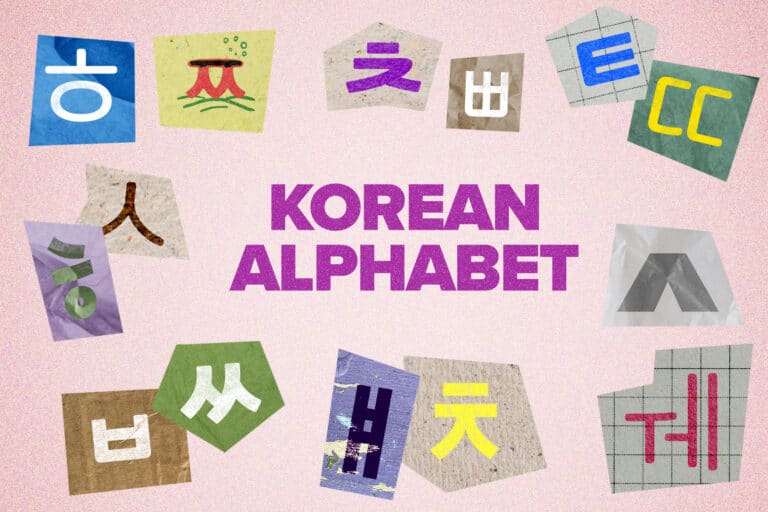
FluentU Language Learning
Spanish
English
French
Chinese
German
Japanese
Russian
Italian
Korean
Portuguese
English for Spanish Speakers
English for Japanese Speakers
English for Russian Speakers
English for Korean Speakers
English for Portuguese Speakers
English for Chinese Speakers
English for Italian Speakers
Educator
Spanish Educator
English Educator
French Educator
FluentU Company Updates
Reviews
How to Learn Korean
Korean Grammar
Korean Learning Resources
Korean Learning Tips
Korean Vocabulary
Reading and Writing Korean
Speaking and Listening to Korean
Korean
How to Learn Korean
More articles
Korean Grammar
More articles
The Complete Guide to Korean Vowels
Korean vowels are known as . There are 21 in total, and you’ll definitely want to put in the effort…
33 Most Common Korean Conjunctions
Early on in your Korean grammar studies, you’ll encounter the all-important conjunctions. They’re small but mighty things that can take…
Hangul | The Korean Alphabet
Meet Hangul (), a wonderfully easy writing system which some proclaim to be the best foreign language alphabet. Before Hangul…Korean Learning Resources
More articles
8 Diverse Korean TV Channels Online for Modern Learners
Korean TV is probably best known for K-dramas, but they’re not the only type of show you’ll find on Korean…
The 14 Best Korean Romance Movies
You may already be aware that Korean entertainment has a particular knack for the drama genre. This makes their romantic…
The 16 Best K-dramas on Hulu in December 2024
Hulu has a bunch of Korean dramas that are uniquely riveting and entertaining. For those of you interested in learning…Korean Learning Tips
More articles
How to Learn Korean [16 Steps to Speak Korean from Scratch]
So you’ve decided you’d like to learn Korean. But with the abundance of materials available, how do you know the…Korean Vocabulary
More articles
50 Korean Text Slang Terms for the Modern Learner
Knowing Korean slang is a vital part of learning the language (or any other language, really). You won’t find them…
15 Deep Korean Quotes
The Korean language and culture has borne quite a few profound quotes that can appeal to all kinds of people…
26 Authentic Korean Exclamations
Exclamations are also very important when learning a foreign language like Korean, because they can help your speech sound much…Reading and Writing Korean
More articles
How to Improve Your Korean Reading Skills
Reading is a great way to learn new grammar and vocabulary, as well as to consolidate the knowledge you’ve picked…
3 Steps to Learn Korean Syllable Structure, Order and Pronunciation
The Korean writing system was intentionally crafted to be simple, easy to learn and to precisely capture the sounds of…
How to Start Reading in Korean [Learn Hangul in 10 Steps]
Learning to read Korean is pretty straightforward, as I had it down in about one week. The only slightly uncertain…Speaking and Listening to Korean
More articles
Korean Pronunciation: How to Sound out Consonants, Vowels and Batchim
When learning a new language, pronunciation is a biggie, so let’s talk about everything to do with mastering Korean pronunciation.…
11 Korean Tongue Twisters That Will Give Your Mouth and Mind a Workout
Tongue twisters are often punctuated with hearty laughs from red-faced participants and tickled-pink observers. They are also a handy tool…


